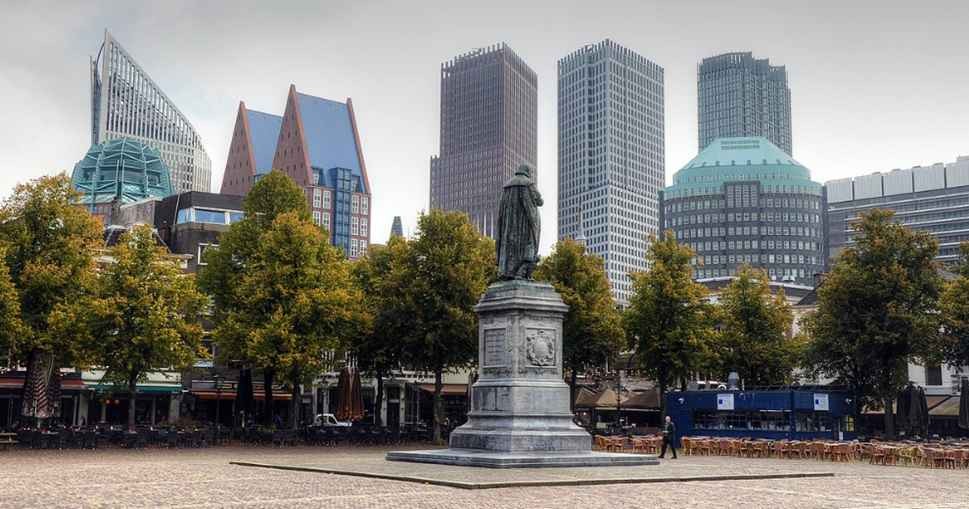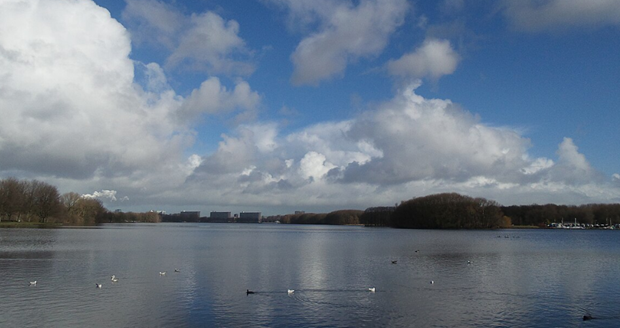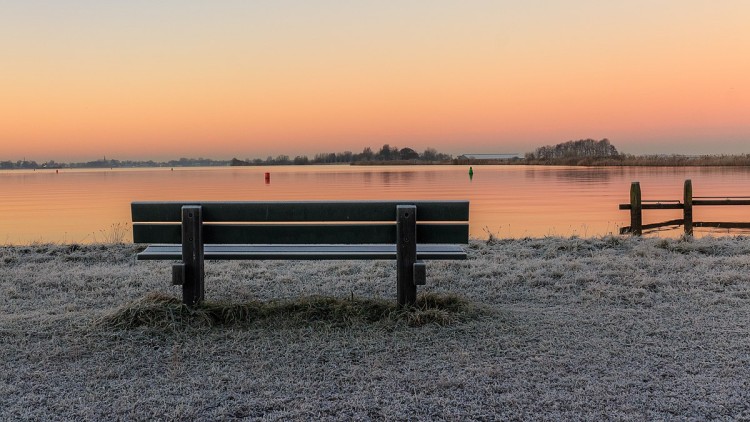

‘Levenseindekliniek’ by Marcel Ouddeken, Hans Kema
- Title ‘Levenseindekliniek’ by Marcel Ouddeken, Hans Kema
- Author Marcel Ouddeken and Hans Kema (directors)
- Year 2016
- Language Dutch
- Tags Complex Requests Dementia Completed Life Documentary film
- Legislative context Termination of Life on Request and Assisted Suicide (Review Procedures) Act (2001) (Netherlands)
- Author of entry Wouter Schrover
The End-of-Life Clinic, founded in 2012, receives numerous requests annually from patients who wish to end their suffering, but whose requests for euthanasia are not straightforward. The documentary Levenseindekliniek (Dutch for 'End-of-Life Clinic') portrays three challenging euthanasia cases. The filmmakers follow the patients during their discussions with the clinic’s doctors, as well as in their daily lives, and interview them, their loved ones, the doctors, and the director of the End-of-Life Clinic, Steven Pleiter. The first patient, Hannie Goudriaan (69), suffers from semantic dementia, which affects her language. According to a clinic doctor, Remco Verwer, this makes it difficult to determine if she is competent to make decisions. However, based on the conversations Verwer has had with Mrs Goudriaan, he believes that her wish to die is clear. Furthermore, he indicates that her living will, which contains a dementia clause, clearly indicates how she would judge her current situation. The second patient, Joop Vervloet (60), has been suffering from compulsive thoughts and actions almost his entire life. Driven by obsessive thoughts, he cuts himself with glass every nine days. The psychiatrist from the End-of-Life Clinic, Gerty Casteelen, judges that Mr. Vervloet’s suffering is hopeless and unbearable, and decides that he qualifies for euthanasia. The third patient, 100-year-old Ans Dijkstra, feels that her life is complete. She no longer finds pleasure in life, struggles with a range of age-related ailments, and has recently lost her son. The clinic doctor, Willem Spiers, believes that he can provide euthanasia in conformity with the guidelines of the law. It is noteworthy that both Verwer and Casteelen state that the End-of-Life Clinic is at the ‘euthanasia forefront’, exploring a new approach to death because they take requests from patients that are rejected by most doctors. Of the doctors who were treating the three patients on a regular basis, only Mrs. Goudriaan's general practitioner is interviewed. He explains that he did not want to comply with her request for euthanasia because, firstly, he did not receive sufficient support from the independent physician and the neurologist, and secondly, he was not entirely convinced of her wish to die.
The documentary sparked heated debate in the Netherlands, both in the media and in politics. Two members of small Christian factions in parliament asked the Minister of Health about questions it raises. Particularly, the euthanasia of Mrs Goudriaan received a lot of criticism, mainly because her desire to die was deemed unclear, and because it was thought the unbearableness of her suffering was not demonstrable. Mrs Dijkstra’s case fueled the public debate on euthanasia for completed life, especially as a committee had just advised against expanding existing legal options regarding assisted suicide. Although the committee argued that persons without a medical condition should not be eligible for euthanasia or assisted suicide under current Dutch law, the question was also whether a clear line can be drawn between completed life and multiple geriatric symptoms, as physicians use the presence of multiple geriatric symptoms in patients who formulate their euthanasia request in terms of completed life as a criterion for eligibility. The Regional Euthanasia Review Committees reflect on the documentary in their annual reports for 2015 and 2016. The Committees emphasize that based on the files of the notifying doctors, independent doctors consulted and other specialists, they found these three cases to have been handled with due care.
Levenseindekliniek, NTR, 15 February 2016 https://www.2doc.nl/documentaires/2016/02/delevenseindekliniek.html
Suggested citation
-
Levenseindekliniek, Assisted Lab: A Living Archive of Assisted Dying, 18 March 2024 <link>
Reviews
Media citations
- Eutanasia, in Olanda si dice addio anche così, la Repubblica, 2021 → repubblica.it
- ‘My death is not my own’: the limits of legal euthanasia, The Guardian, 2018 → theguardian.com
- In the Netherlands, the doctor will kill you now, Wall Street Journal, 2017 → wsj.com
- De levenseindekliniek – het is geen sciencefiction, het is echt, De Telegraaf, 2016 → telegraaf.nl
- Euthanasiefront, Medisch Contact, 2016 → medischcontact.nl
- Huppakee weg? Deze euthanasie roept vragen op, NRC, 2016 → nrc.nl
- De eigen dood is simpel, maar die van een ander…, Trouw, 2016 → trouw.nl
- Het verhaal achter huppakee-weg en de dood van Hannie, de Volkskrant, 2016 → volkskrant.nl
- Napraten over de Levenseindekliniek, NTR, 2016 → npo.nl
Interest Group citations
- Euthanasia and physician assisted suicide: Are they clinically necessary or desirable?, International Association for Hospice and Palliative Care, 2019 → hospicecare.com
- Zeer geslaagde Week van de Euthanasie, Relevant: Tijdschrift van de NVVE, p. 38, 2016 → nvve.nl
Legal and Paralegal citations
- Regional Euthanasia Review Committees, Annual Report 2016, April 2017 → euthanasiecommissie.nl
- Algemene Politieke Beschouwingen, gehouden op 1 november 2016, Eerste Kamer der Staten-Generaal, kamerdossier 34550, nr. 5, item 6, 11 November 2016 → zoek.officielebekendmakingen.nl
- Regional Euthanasia Review Committees, Annual Report 2015, April 2016 → euthanasiecommissie.nl
- Verslag van een algemeen overleg, gehouden op 16 februari 2016, over medische ethiek, Tweede Kamer der Staten-Generaal, Kamerstuk 29963, nr. 15, 6 April 2016 → tweedekamer.nl
- Antwoord op de vragen het lid Dik-Faber over de uitzending van de documentaire Levenseindekliniek, Tweede Kamer der Staten-Generaal, nr. 1819, 9 March 2016 → tweedekamer.nl
- Antwoord op de vragen van het lid Van der Staaij over de uitzending van de documentaire Levenseindekliniek, Tweede Kamer der Staten-Generaal, nr. 1812, 9 March 2016 → tweedekamer.nl
- Vragen van het lid Dik-Faber (ChristenUnie) aan de minister van Volksgezondheid, Welzijn en Sport over de uitzending van de documentaire Levenseindekliniek, Tweede Kamer der Staten-Generaal, 2016Z03789, 22 February 2016 → tweedekamer.nl
- Vragen van het lid Van der Staaij (SGP) aan de minister van Volksgezondheid, Welzijn en Sport over de uitzending van de documentaire Levenseindekliniek, Tweede Kamer der Staten-Generaal, 2016Z03591, 18 February 2016 → tweedekamer.nl
Related Archival Entries
'Witte flits' by Laura Hermanides

Laura Hermanides (director and writer), Roelof Jan Minneboo (writer)
Rick has been suffering from severe psychological issues for twenty years. His persistent wish not to live any longer is acknowledged by a psychiatrist, who assists with his suicide. Rick is actively supported by his parents, who come to recognize the hopelessness of their son’s situation.
'Winter in Gloster Huis' by Vonne van der Meer

Vonne van der Meer
In this novel set in 2024, the ‘Done with Life Act’ is law in the Netherlands, permitting assisted suicide for those who consider their lives complete. At the same time, two brothers receive a huge inheritance. One starts a farewell hotel, which facilitates a self-chosen death; the other starts an extended-stay hotel, where people are surrounded by care and attention until their natural passing.